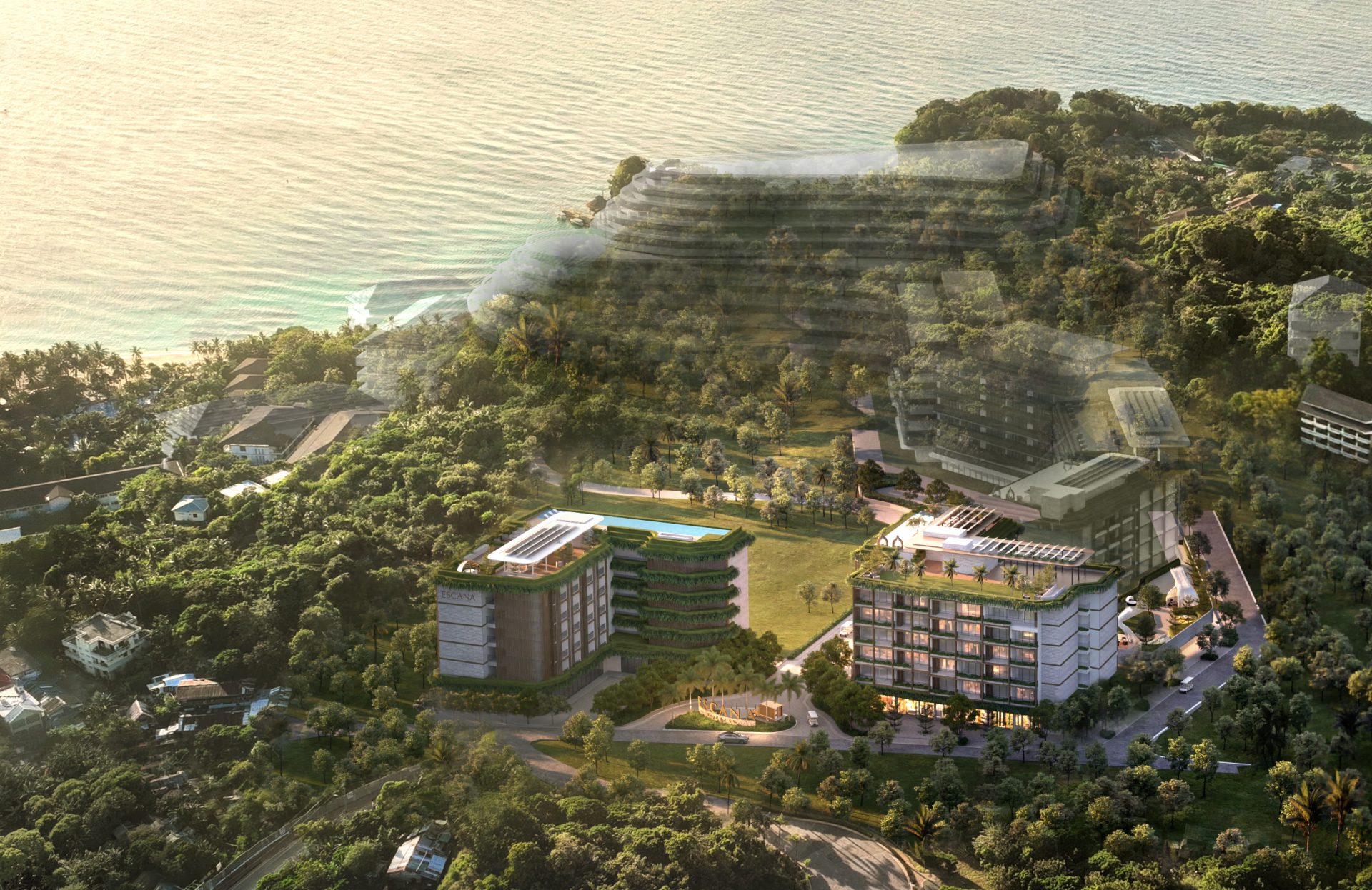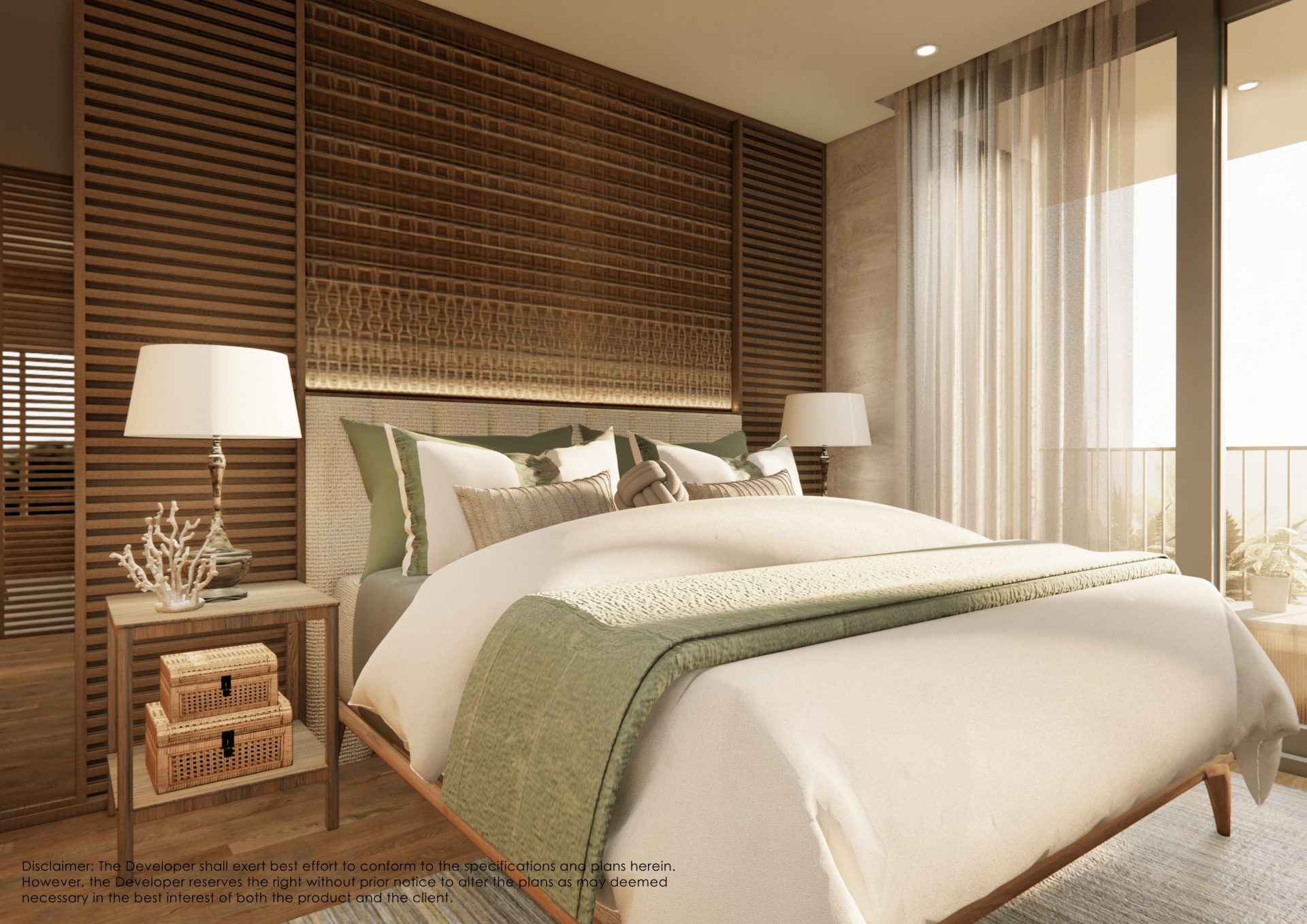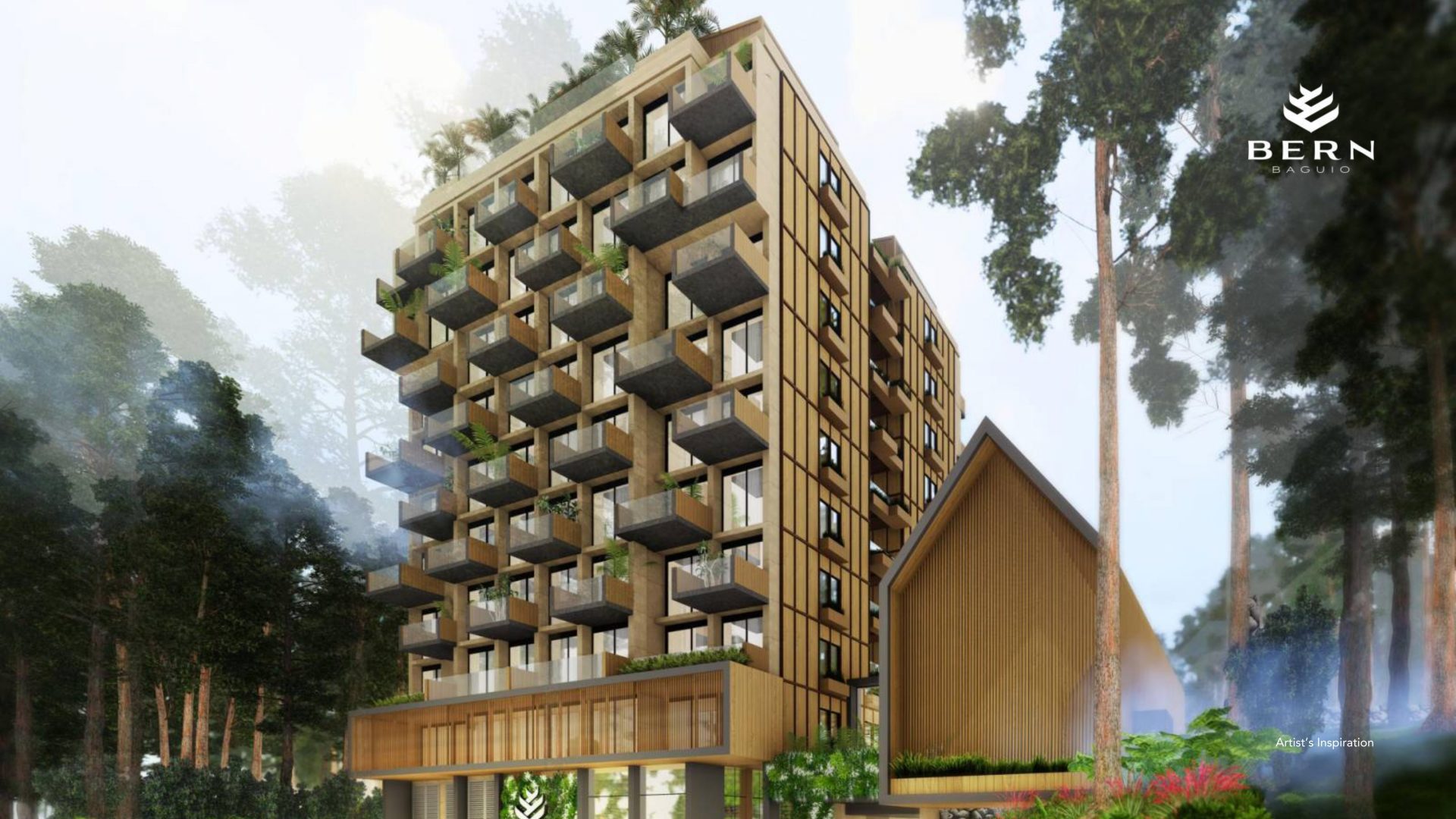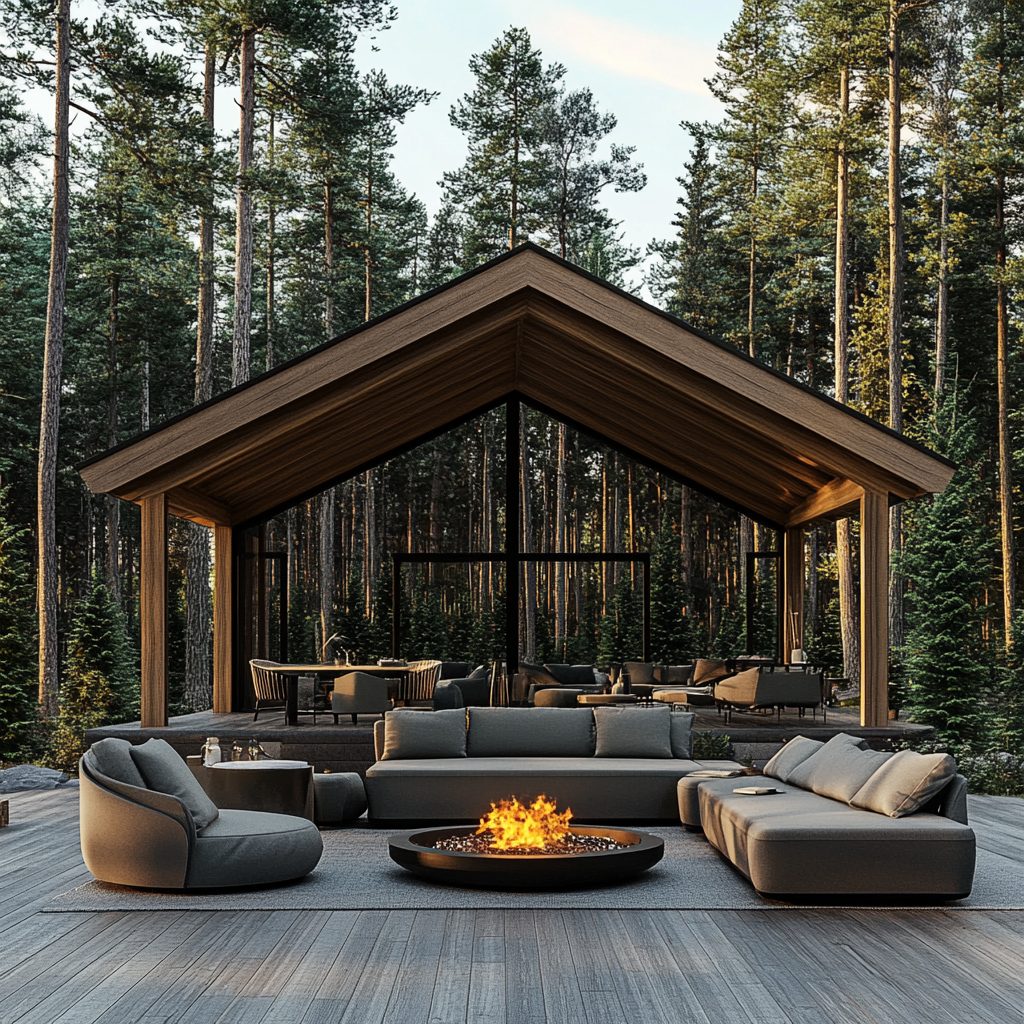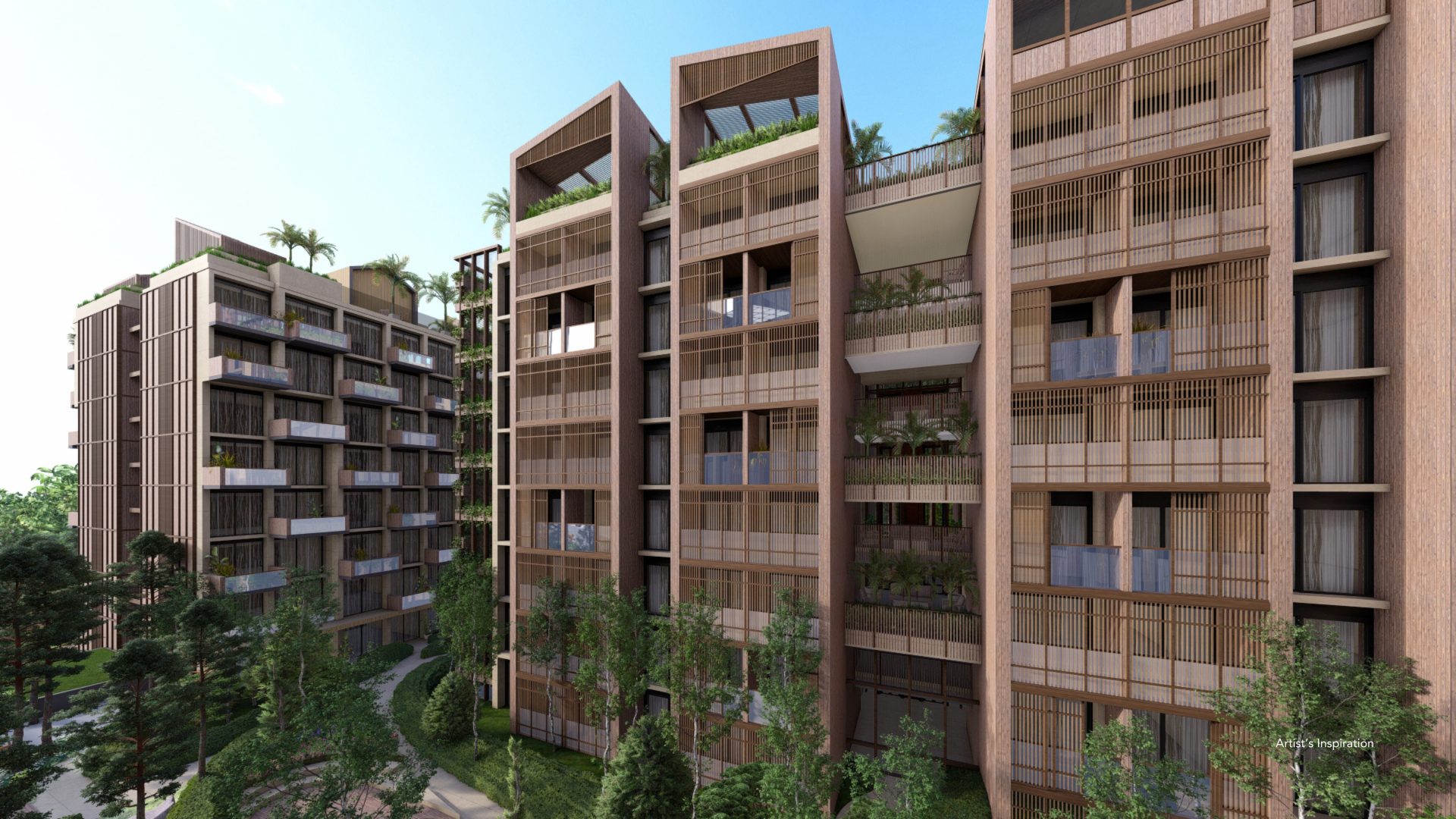BLOGS
Best Patterns For Biophilic Home Design
More and more residential spaces and communities are becoming highly urbanized. This means “concrete jungles” grow each year, creating a disconnect between people and the natural environment. While expansion and urbanization may be seen as a sign of continued progress, losing connection to nature and various natural elements can lead to negative effects on the health and well-being of communities.
A way to combat this is by implementing biophilic design. With this design concept, modern architecture honors nature. It brings it back to residential and commercial spaces to provide an environment that combines the luxury of modern amenities with the healing and calming properties of nature.
Introducing biophilic design to your luxury homes can create a positive impact on you and your family. With a biophilic home design, young children grow up more connected to nature, and they are more likely to spend time doing activities outdoors than staying inside immersed in their various electronic devices. Coming home to your luxury residence that brings in elements from nature also eases your mind as the day comes to a close. Coming home after work becomes a nature retreat, allowing you to decompress and relax into the evening. So for your next home purchase, find out whether biophilic design patterns can be implemented for your new luxury home.
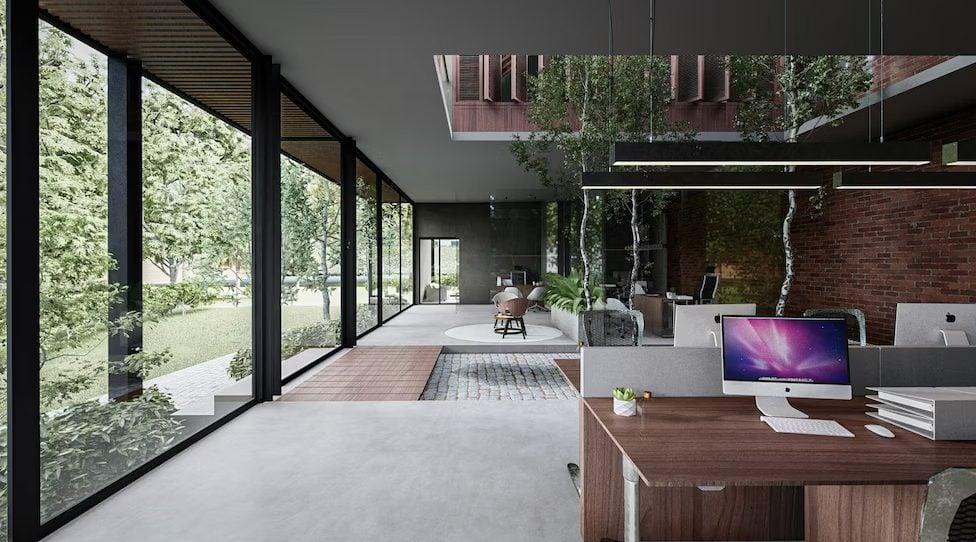
What is Biophilic Design?
Biophilia is a word that means “the love of life, all living things, and nature.” With this term in mind, biophilic design then becomes a concept in architecture and home design that aims to increase people’s connectivity to the natural environment. This is done by using direct nature, indirect nature, and space and place conditions.
Biophilic design can be done in a small-scale fashion, such as a bedroom or luxury condo unit, or it can be implemented on a larger scale such as an entire luxury home or even an entire city.
What is Biophilic Design Patterns?
Biophilic design patterns were created to guide and assist designers and architects in the design process of creating biophilic homes and spaces. These different patterns make it easier to create connections between the built environment and the natural environment. The end result of using biophilic design patterns is creating a space that benefits people and invokes a love, appreciation, and deeper connection with the natural environment.
The 14 biophilic patterns are separated into three categories: Nature in the Space, Natural Analogues, and Nature of the Space.
Nature in the Space
Nature in the space means biophilic design concepts that give people direct physical contact with nature in an interior space. It goes beyond introducing a few potted plants indoors, but goes deeper into creating ways to interact with the natural world. In essence, it brings real elements of the natural environment into an urban space.
-
Visual Connection with Nature
Seeing nature visually, like through a window or in courtyard gardens. This can also be applied to ocean views, seeing green walls or vertical gardens, as well as garden roofs.
Real natural elements are preferred, but in the absence of real nature, digital or simulated nature can be applied.
-
Non-Visual Connection with Nature
Designing a space with nature elements that stimulate the four other senses (sound, touch, taste, and smell). This can include playing a background noise of river flow or ocean waves, or even playing ambient forrest sounds. For tactile input, adding a real moss wall, small water fountain, or sand pit that can be touched or played with. And using natural oils and botanical scents to introduce fragrance to the space will help engage the sense of smell.
-
Non-Rhythmic Sensory Stimuli
Stimuli and patterns in nature that are unpredictable, such as ripples of water, leaves fluttering in the wind, or birds and insects flying around plants. The non-rhythmic sensory stimuli and movement of these natural elements provides rich sensory experiences, giving people a break from the structure of urban life.
-
Thermal & Airflow Variability
Intorducing subtle changes in temperature, air flow, and humidity throughout the day that mimic natural environments.
-
Presence of Water
Being able to see, hear, or touch water in a space adds to a calming effect, among its many benefits. It is better to introduce water elements that are naturally fluctuating with a more gentle flow.
-
Dynamic & Diffuse Light
Creative design of windows and light acces to create different intensities of light and shadow that shifts throughout the day with the direction of the sun. This is intentional lighting that mimic natural environments.
-
Connection with Natural Systems
A design element that promotes awareness of natural patterns, living systems, and seasonal changes, bringing people in closer proximity to the cycles of nature. This can be introduced by creating a garden with flowers and plants that have different plant growth patterns. Or you can add design elements that react to sunlight, wind, or rain.
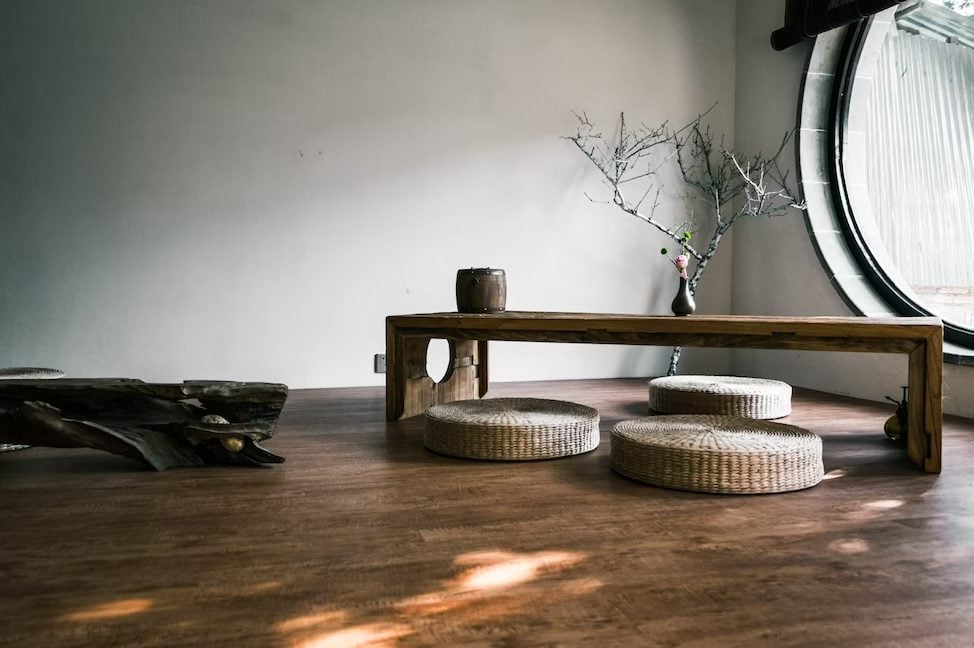
Natural Analogues
Natural analogue patterns use elements with an indirect connection to nature. These design elements may be used to imply or invoke the natural world through the use of color, texture, shape, and material.
-
Biomorphic Forms & Patterns
These forms of biophilic patterns refer to design that follows the textures, shapes, numerical arrangements or patterns that are found in nature. These can refer to “organic” design that features curved or rounded forms or draws inspiration from plant patterns.
-
Material Connection with Nature
This involves the use of minimally processed materials that retain the grains, textures, and colors of the natural material to reflect its connection to the natural world. This pattern can be found in the use of bamboo, natural fibers, stone, and wood.
-
Complexity & Order
The design of a space will result in a rich sensory experience that follows the symmetries, fractal dimension, patterns, and design flows commonly found in nature.
Nature of the Space
The nature of the space frames how people relate to a room, space, or building on a deeper human level. Creating a space that can evoke a sense of discovery through strategic obstruction and revelations can make a space feel mysterious and exciting rather than direct and boring. It allows a space to feel alive rather than sterile.
-
Prospect
Prospect design patterns take into account the big picture of your space. Allowing for areas with unobstructed views such as balconies, skylights, large windows, mezzanines, or transparent partitions are examples of prospect patterns.
-
Refuge
Refuge patterns operate in a similar way to prospect patterns, but with one key change. Refuge patterns allow people to view the surroundings, but from a protected position rather than in an open one. Pockets and nooks of refuge allow people space away from noise, distractions, and the main flow of activity.
-
Mystery
Mystery in biophilic design patterns is achieved by providing a surprising element, or through urging a person to move forward in the space by using elements that draw them in or by partial obstruction of views.
-
Risk/Peril
This design pattern involves introducing an element of controlled risk that may feel dangerous, but is actually safe. A common example of this is having floor to ceiling glass panels on a high-rise building so occupants inside can see extensive views of the city below.
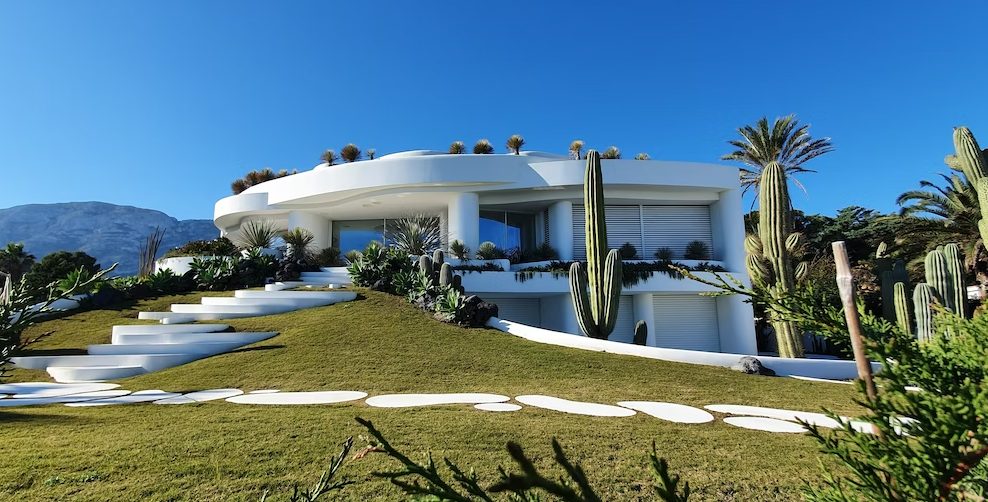
How do You Make Biophilic Designs at Home?
Pattens in nature actually follow mathematical patterns which have been studied by scientists. But you don’t have to worry about any of that when coming up with a biophilic design concept statement for your personal luxury home. It may take some planning and a solid design concept mood board, but a home that honors nature patterns and material connection can be achievable.
Play with Patterns
Jumpstart your creative process by implementing nature patterns into your home. these can be spiral patterns, animal patterns, or leaf patterns. Nature’s patterns are a great inspiration for rich sensory information that you can inject into urban living.
Include the Elements
Aside from visible patterns, you can include the elements and natural systems into your home’s solid design concept. Consider a wall fountain as an entryway focal point to add water to your design concept. introduce skylights and windows that let sunlight in. Add green walls indoors with plant growth and moss.
Combine Indoor and Outdoor Spaces
One way to invite nature into your biophilic home is by adding spaces that blur the lines between indoor and outdoor. Interior courtyards with ample plant life is an example. Or make use of large windows to make the skyline or nature scape become part of your home.
Use Natural Materials
Adding furniture and art that feature natural materials and textiles can help create a more nature-inspired space. Linen, cotton, rattan, and bamboo are common materials. But you can also make use of other natural wood, or textured stone.
Prioritize Organic Shapes
Straight lines and perfect angles are rare in nature. So to make a biophilic design for your home, prioritize using organic shapes, freeform furniture, curved or winding garden paths, and sloping landscapes.
Pievana By Brittany: Your Dream Biophilic Home
The importance of nature to health and wellness is a priority for new home buyers. As an answer to this need, Brittany Corporation’s newest luxury residential project in Batangas is designed to be a nature retreat inspired by biophilic architecture. Pievana is a luxury community that provides residents with a strong connection to nature through ample open and green spaces as well as biophilic design.
Make Pievana your relaxing nature-infused home! Check the Brittany website for more information about luxury living in Pievana.
Suggested Read: Home Office Ideas: Elegant And Functional
Suggested Read: What Are The Benefits of Biophilic Design
Suggested Read: The Lounge Life: Home Ideas For Indoors
Suggested Read: 7 Elements Of Interior Design



